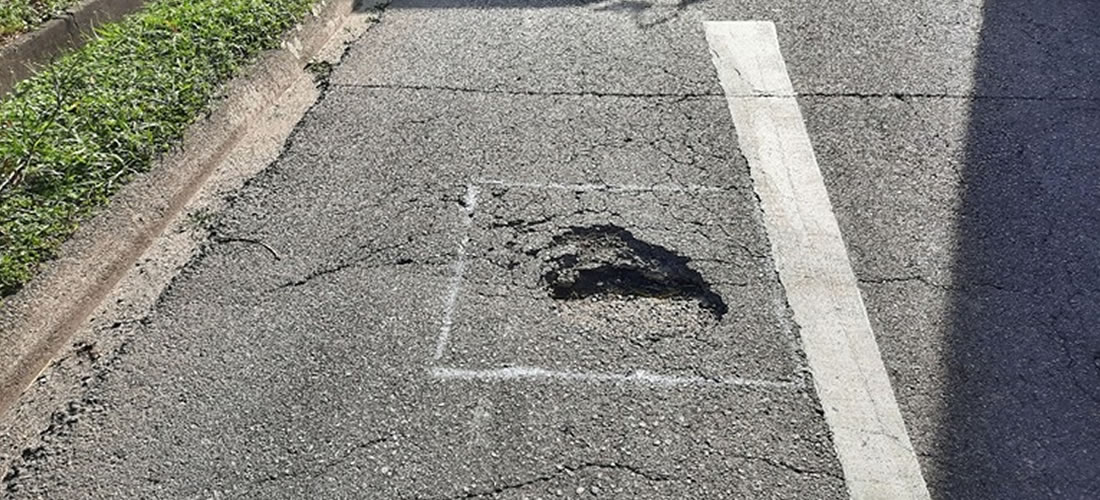Potholes are a familiar sight on roads and highways globally. These depressions or cavities in the pavement result from various factors, such as weather conditions, traffic load, pavement age, and poor maintenance. Not only do potholes affect the smooth traffic flow, but they also pose safety concerns for drivers and pedestrians alike. Therefore, it is crucial to understand why potholes keep recurring and how they can be prevented.
In this article, we will explore the causes, consequences, and solutions to potholes and discuss the measures that can help to keep our roads safe and functional.
Causes of Potholes
Potholes are a scourge on our roads and highways, causing damage to vehicles, endangering drivers and pedestrians, and costing billions of dollars in repairs. Understanding the causes of potholes is crucial to preventing them from recurring and maintain safe and functional roadways. These causes include:
- Weather conditions: freezing and thawing cycles, heavy rain, and extreme heat can all contribute to the formation of potholes.
- Age of pavement: as pavement ages, it becomes more brittle and susceptible to cracking and breaking apart.
- Traffic load: the amount and weight of traffic that drives over pavement can lead to the formation of potholes, especially in areas with heavy truck traffic.
- Poor maintenance practices: delaying repairs or using low-quality materials can accelerate the formation and worsening of potholes.
Whether it’s designing better pavement, implementing regular maintenance practices, or utilizing new technologies, there are a variety of solutions available to tackle the problem of potholes. By addressing the underlying causes of potholes, we can ensure that our roads and highways are safe and reliable for years.
Consequences of Potholes
The consequences of potholes are significant, affecting both individuals and society. Firstly, potholes pose a safety hazard to drivers, bicyclists, and pedestrians. Drivers may swerve to avoid potholes, potentially causing accidents or collisions with other vehicles, bicyclists, or pedestrians.
Additionally, potholes can cause significant damage to vehicles, including flat tires, bent rims, and suspension damage. These repairs can be costly for vehicle owners and, in some cases, can render the car undrivable.
Lastly, the economic costs of potholes are substantial, with estimates suggesting that they cost billions of dollars in repairs and lost productivity each year. By addressing the consequences of potholes, we can better understand their toll on our society and prioritize efforts to prevent their occurrence.
Pothole Repair Techniques
Potholes can be repaired through a variety of techniques, ranging from temporary fixes to permanent solutions. Quick fixes are often used to address potholes quickly and effectively, but they are short-term solutions.
Some common temporary fixes include filling the pothole with asphalt or other materials, which can help to prevent further damage until a more permanent solution can be implemented.
On the other hand, permanent solutions aim to address the root cause of potholes and prevent their recurrence. These solutions may involve:
- Milling and resurfacing the entire pavement: This technique involves removing the top layer of pavement and replacing it with new asphalt or concrete.
- Full-depth patching: this technique involves removing and replacing the entire section of pavement where the pothole is located.
- Reconstruction: This technique involves removing and rebuilding the entire pavement from scratch.
Innovative approaches to pothole repair are also emerging, such as using recycled materials, implementing self-healing concrete, and utilizing robots for pothole repair.
Preventive Measures
Preventing potholes from forming in the first place is vital to maintaining safe and functional roadways. Pavement design plays a critical role in avoiding potholes. It may involve using materials more resistant to cracking and breaking apart. Regular maintenance, such as filling cracks and sealing pavement, can also help to prevent potholes from forming.
New technologies, such as infrared heating, pothole prediction software, and autonomous road repair vehicles, offer promising solutions for preventing and repairing potholes.
Conclusion
In conclusion, potholes are a recurring problem on our roads and highways. Still, they can be prevented and repaired through various techniques and preventive measures. Understanding the causes, consequences, and solutions to potholes is crucial to maintaining safe and functional roadways.
By addressing the underlying causes of potholes, implementing regular maintenance practices, and utilizing innovative technologies, we can reduce the occurrence of potholes and improve the safety and reliability of our transportation infrastructure.


